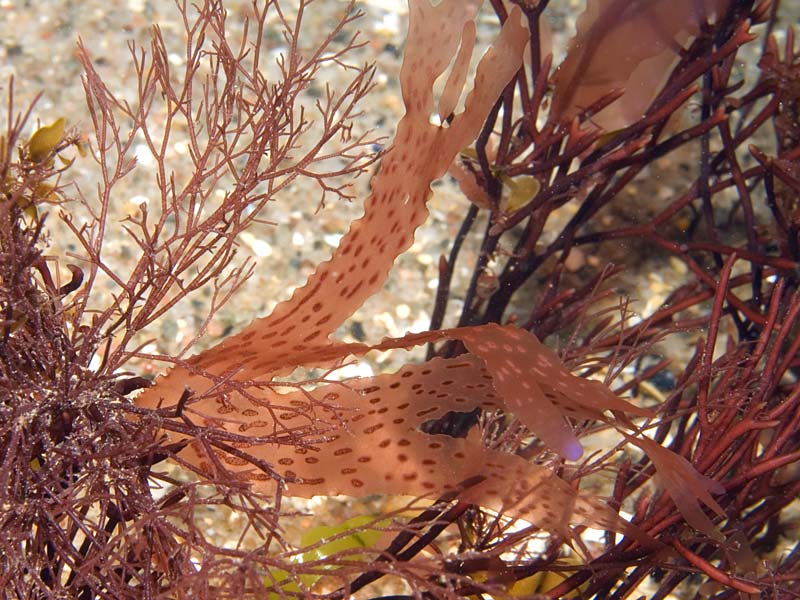Nitophyllum punctatum (Stackhouse) Greville

Picture © Bernard Picton, Ulster Museum
Description: Delicate membranous, rose-pink fronds with an elongate fan-shaped outline, edges distinctly frilly, to 40 (exceptionally)1000 mm long, occasionally to 1 m, sessile or shortly stipitate (< 2 mm long). Frond veinless, undivided or deeply subdichotomously divided to the base; apices blunt or rounded, often ribbon-like. Gametophyte plants form rounded spots to nn mm in diameter whilst tetrasporphyte plants form characteristinc elongated spots
Habitat: Annual intertidal pools in winter and early spring and in the subtidal (15 m) on cobble or other mobile surfaces and on bedrock in the lower parts of kelp forests from spring to mid-or late summer; widely distributed, frequent. Most obvious in spring and early summer.
Similar species: Similarly delicate Porphyra species occur mainly in the intertidal but are more gelatinous to the touch and do not form well-defined rounded or elongated spots; Halarachnion ligulatum is less translucent, and is less delicate and not frilly; Haraldiophyllum grevillei is generally clearly stalked has reproductive sori that are rounded rather than elongated.
Distribution: widely distributed, most common in spring. Grid Map.
Key characteristics: Delicate, veinless, tanslucent fronds with and elongated fan shape and with elongate or rounded spots (reproductive sori) scattered regularly on most plants. Extremely large plants to 1 m long have been known for many years from NE Ireland; there is no explanation for this phenomenon.





